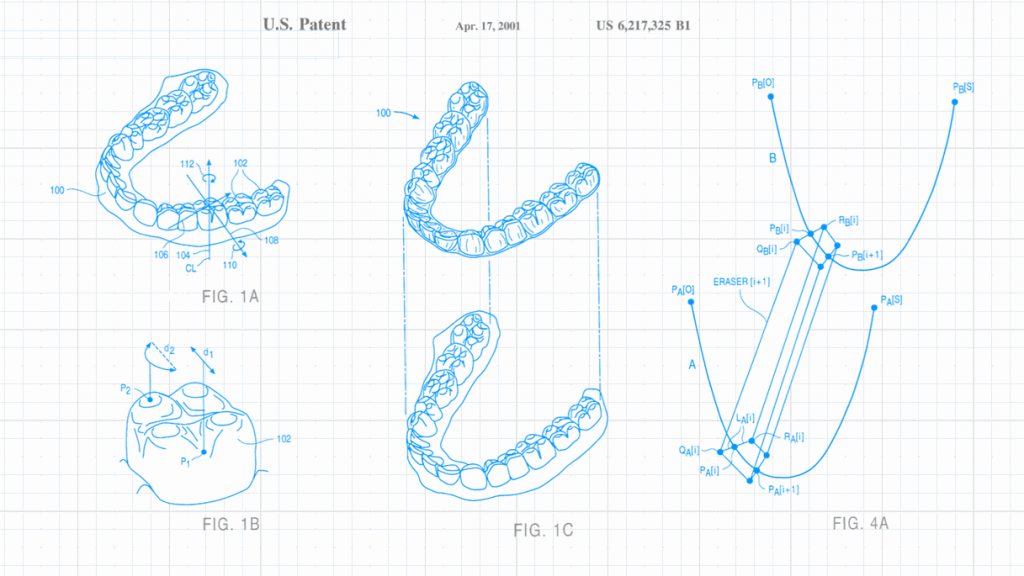3D printing is at the center of a monumentally important, extremely controversial copyright infringement debate with global implications. This lawsuit that involves powerhouses like Google, the Motion Picture Association of America (MPAA), and the US International Trade Commission (ITC), a quasi-judicial, independent, bipartisan,  federal agency that provides the legislative and executive branches of the government with trade information and expertise. The ITC basically polices trade in the interest of protecting US industries from unfair trade practices like subsidies, trademark, patent, and copyright infringement.
federal agency that provides the legislative and executive branches of the government with trade information and expertise. The ITC basically polices trade in the interest of protecting US industries from unfair trade practices like subsidies, trademark, patent, and copyright infringement.
The ITC became involved in a dispute between Align Technology, Inc. and ClearCorrect Operating, LLC. Align’s process for creating its Invisalign® products — plastic teeth aligners (molds) that eliminate the need for metal braces — is patented. Align’s method involves scanning a client’s teeth and then converted the scans into digital files. The files are used to create 3D models of the plastic teeth aligners customized to fit the client perfectly. A series of molds are created, ideally via 3D printing, as the alignment process progresses.
 Align’s patents cover the methods for producing the aligners rather than the objects themselves. Therefore, the use of the process, creation of the digital data sets, itself becomes an infringement of the patent before the final molds are ever produced. Align alleged that Texas-based ClearCorrect had violated Section 337 of the Tariff Act of 1930, which deals with unfair practices in import trade and allows the US government via the ITC to protect US intellectual property rights from foreign infringement. According to the lawsuit documents, ClearConnect produced the original teeth scans in the United States but subsequently sent the files to Pakistan. There, the digital data sets were converted to 3D models, which were then sent back to ClearConnect where the actual molds were 3D printed.
Align’s patents cover the methods for producing the aligners rather than the objects themselves. Therefore, the use of the process, creation of the digital data sets, itself becomes an infringement of the patent before the final molds are ever produced. Align alleged that Texas-based ClearCorrect had violated Section 337 of the Tariff Act of 1930, which deals with unfair practices in import trade and allows the US government via the ITC to protect US intellectual property rights from foreign infringement. According to the lawsuit documents, ClearConnect produced the original teeth scans in the United States but subsequently sent the files to Pakistan. There, the digital data sets were converted to 3D models, which were then sent back to ClearConnect where the actual molds were 3D printed.
At the crux of the debate in the ITC case was whether or not the electronic transmission of the digital files could be considered an “importation of articles” within the interpretation of 19 USC § 1337 (US law code regarding unfair practices in import trade). The ITC received submissions on the subject from the MPAA and Google (among others), major players and, it should be noted, fierce opponents of one another, in the intellectual property and patent/copyright infringement debate. Ultimately, the ITC found (with only one dissenting vote) that the digital data sets, produced using Align’s patented method, must be considered “articles.”
In short, acts of infringement of digital patents need not be based on tangible “articles” or products. Probably pretty obviously, this decision by the ITC has tremendous implications where 3D printing technology is concerned. One of the extremely problematic aspects of this decision is that, while the ITC case involved two companies, with the greater availability via open source sites (among other venues) where digital files (like 3D models) are easily accessible and often at no cost, potential infringers will be individuals working on home computers printing their own aligners — or anything else, for that matter.
In an article from April 2014, Professor Lucas Osborn, director of the Intellectual Property Law Program at the Campbell School of Law in Raleigh, NC, sees two major issues among the many raised in the Align and ClearCorrect case. The first, he observes, relates to “how… patent law [should] treat claims directed to digital representations of physical objects.” The second issue, writes Osborn, is how “patent law [should] treat claims directed only to physical articles where the alleged infringement involves only or primarily digital renderings of the physical articles.” As Osborn points out, the patents owned by Align relate to the first issue. He urges companies who want to protect actual physical products to think seriously about “protecting digital versions of them as well.”
Prior to the digital age, companies traditionally filed patent claims for physical objects. “Much as music and movie industries… battle digital copyright infringement, patent owners,” warns Osborn, “may be on the cusp of their own digital patent war.” Let’s say you create, refine, and then transmit a 3D file. You can basically do that now as easily as you can share an .mp3 file. Thanks to the Internet, 3D printing essentially decentralizes and, realistically, “anonymizes” the production of “tangible objects.” This begs the question of whether or not a court could then find that the use of the digital file is an infringement of a patent claim for the physical object. Osborn continues in a conclusion that is understandably open-ended:
“If not, will claims of indirect infringement be an effective tool against the individuals and websites that host and transmit the CAD files (3D digital models)? These questions will be of increasing importance in an era of ubiquitous 3D printing technology.”
The issue is now almost irrevocably intertwined with the ongoing battle being spearheaded by the MPAA, with formidable opponents like Google, to curb copyright infringement to protect creative content from piracy and to limit the sharing of copyrighted works through peer-to-peer file sharing networks such as The Pirate Bay and Isohunt. Thwarted in its efforts to convince Congress to enact stronger legislation to fight copyright infringement and online trafficking of counterfeit goods via the Stop Online Piracy Act (SOPA) and the Protect IP Act (Preventing Real Online Threats to Economic Creativity and Theft of Intellectual Property Act, or PIPA), the MPAA is looking for non-legislative strategies. At stake, according to opponents of SOPA and PIPA, both of which are languishing in a fierce, partisan limbo for now, are free speech and future innovation. According to the prospective laws’ critics, PIPA and SOPA would give law enforcement far too much power to censor and expose neutral entities like libraries to prosecution.
And what of 3D printers availing themselves of extant, online CAD files? As yet, infringement lines are ambiguous but we’ll keep you apprised of developments in this arena, which could potentially have enormous implications for the 3D printing industry.
Let us know what you think about legislation in the 3D printing space. Tell us your thoughts in the US ITC Intellectual Property forum thread over at 3DPB.com.
Subscribe to Our Email Newsletter
Stay up-to-date on all the latest news from the 3D printing industry and receive information and offers from third party vendors.
You May Also Like
3D Printing News Briefs, April 13, 2024: Robotics, Orthotics, & Hypersonics
In 3D Printing News Briefs today, we’re focusing first on robotics, as Carnegie Mellon University’s new Robotics Innovation Center will house several community outreach programs, and Ugogo3D is now working...
Rail Giant Alstom Saves $15M with 3D Printing Automation Software 3D Spark
3D Spark has entered into a three-year deal with the rail giant Alstom. Alstom, a transport behemoth with annual revenues of $16 billion, specializes in the manufacture of trains, trams,...
Meltio Expands Global Reach with New Partnerships in the Americas and Europe
Spanish 3D printing manufacturer Meltio has expanded its sales network across the globe. With the addition of three new partners in the United States, Brazil, Argentina, and Italy, Meltio aims...
3D Printing Webinar and Event Roundup: April 7, 2024
Webinars and events in the 3D printing industry are picking back up this week! Sea-Air-Space is coming to Maryland, and SAE International is sponsoring a 3D Systems webinar about 3D...

































